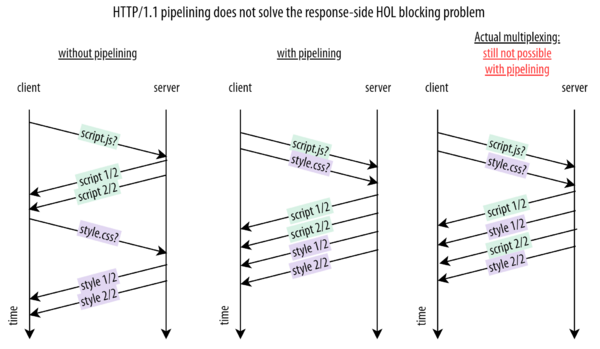HTTP pipelining
HTTP pipelining is a feature of HTTP/1.1, which allows multiple HTTP requests to be sent over a single TCP connection without waiting for the corresponding responses.
HTTP/1.1 requires servers to respond to pipelined requests correctly, with non-pipelined but valid responses even if server does not support HTTP pipelining. Despite this requirement, many legacy HTTP/1.1 servers do not support pipelining correctly, forcing most HTTP clients to not use HTTP pipelining.
The technique was superseded by multiplexing via HTTP/2, which is supported by most modern browsers.
In HTTP/3, multiplexing is accomplished via QUIC which replaces TCP. This further reduces loading time, as there is no Head-of-line blocking even if some packets are lost.
Crucially however, this pipelining only applies to the requests from the browser. As the HTTP/1.1 specification says:
A server MUST send its responses to those [pipelined] requests in the same order that the requests were received.
As such, we see that actual multiplexing of response chunks is still not possible with HTTP/1.1 pipelining. Put differently: pipelining solves HOL blocking for requests, but not for responses. Sadly, it’s arguably the response HOL blocking that causes the most issues for Web performance. [1]

